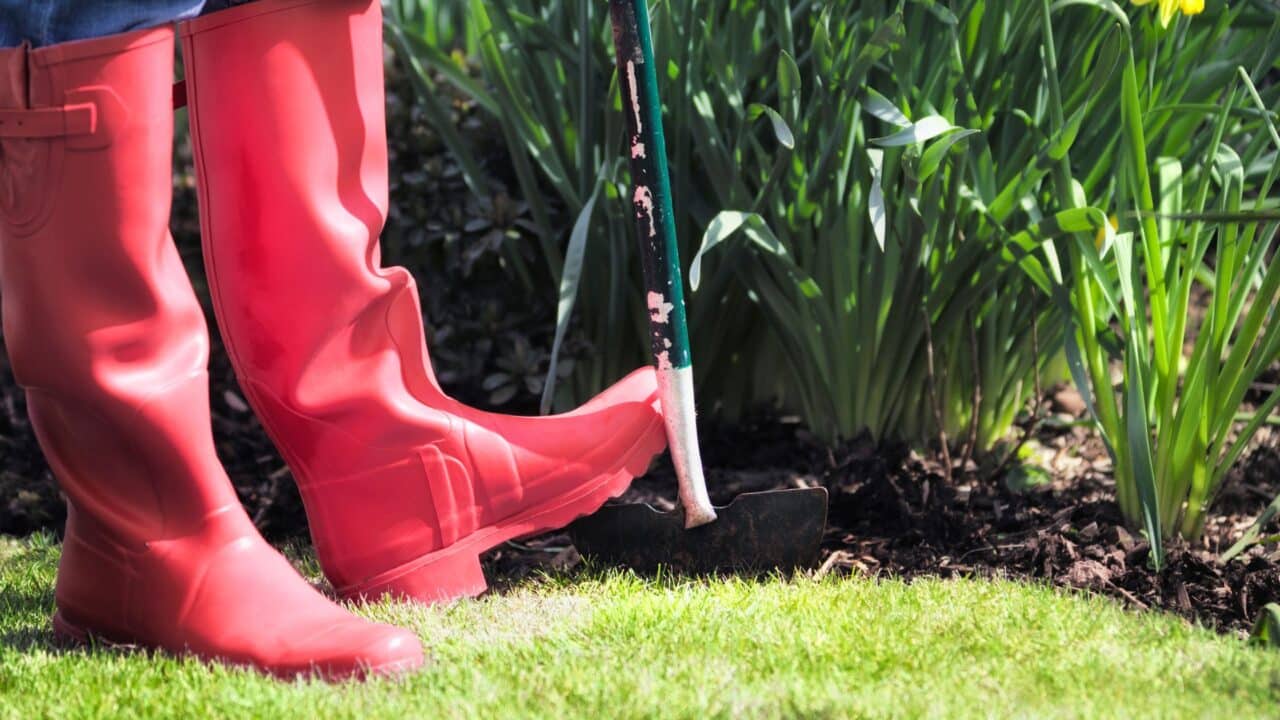The best time to install or re-edge your landscape beds is in early spring or early fall, when soil is workable and plant growth is just beginning or winding down. These windows give you the longest-lasting results and prep your yard for peak growing (or showing) season.
When’s the Best Time of Year to Install or Re-Edge Your Landscape Beds?
Whether you’re creating brand-new garden beds or refreshing the edges of your existing ones, timing matters. You want your work to last, your mulch to stay put, and your plants to thrive — all while keeping your landscape looking sharp.
So when should you tackle this project?
Here’s the expert answer:
-
Early spring is ideal for both new bed installs and clean re-edging
-
Early fall is a strong second, especially for bed reshaping or seasonal prep
-
Summer and late fall? Possible — but less ideal unless you’re in a pinch
Let’s break down why timing makes such a big difference, and what to expect if you’re edging or reshaping your beds in each season.
🪴 Spring: The Prime Time for Edging and New Beds
If you want your yard to look its best through summer, spring is the time to start.
Why Spring Is Best:
-
Soil is soft and easy to cut, especially after thaw
-
Grass hasn’t yet overtaken old edges
-
New mulch sits better on freshly edged beds
-
Spring rains help settle beds and encourage growth
-
Prepping early means less weeding later
A clean edge at the start of the season sets the tone for your whole landscape. Whether you’re trench-edging by hand or having a pro install a permanent edge, do it before mulching for best results.
🍂 Early Fall: Ideal for Edging and Reworking Beds
Fall is the other sweet spot, especially in regions like Northeast Ohio with cooler soil and declining growth.
Why Fall Works Well:
-
The soil is still soft and workable
-
You can reshape or redefine beds after summer overgrowth
-
Mulch added in fall insulates perennials and bulbs
-
Beds are cleaner going into winter, which means less work in spring
Fall edging is especially useful for people who mulch twice a year, want to plant new perennials, or are reworking old beds as part of a larger redesign.
☀️ Summer: Doable, But Not Ideal
Summer isn’t off-limits — but there are some trade-offs:
-
Soil is often dry and hard, making edging more labor-intensive
-
You’ll be working in hotter temps
-
Weeds may already be thriving, especially near the edge
-
Mulch applied in summer may not hold as well without moisture
Still, if your beds are looking rough and the edges are fading, a summer re-edge and light mulch top-off can restore curb appeal fast. Just be sure to water the beds well before digging.
❄️ Late Fall & Winter: Only If the Ground Is Soft
By late fall, edging becomes tough. Freezing temps, compacted soil, and dormant plants mean your work might not settle well.
We don’t recommend edging when:
-
The ground is frozen
-
You’re expecting heavy snow within days
-
You’re working on brand-new plantings that need time to root
That said, if the weather cooperates, a quick re-edge and cleanup in late fall can make spring yard prep much easier.
Pro Tip: Edge Before You Mulch
Whether it’s spring, fall, or even midsummer, the golden rule is:
Always edge before you mulch.
Clean trench edges or defined metal/stone edging:
-
Hold mulch in place
-
Keep beds looking neat longer
-
Reduce how often you need to refresh or re-mulch
It’s the small step that makes a big difference in how “finished” your yard looks.
How Often Should You Re-Edge?
Here’s a quick rule of thumb:
-
Walkways and driveways: Edge every mow
-
Natural bed edges: Re-cut 2–3 times per year
-
Major reshaping or new beds: Do it in spring or fall
Tools for Timing Edging Right
If you’re DIYing, aim to edge when:
-
Soil is moist but not muddy
-
Grass is dormant or just emerging
-
Weather is above freezing but not scorching
The right tools for seasonal success:
-
Spade or edging shovel (for trench edges)
-
Stick edger (for hard surfaces)
-
Wheelbarrow and rake (for debris removal)
-
Mulch fork or hands (to finish the job right)
Cleveland-Area Considerations
Here in Northeast Ohio, March through early May is your best spring window.
Late September through October is ideal for fall work.
Keep in mind:
-
Spring rains make soil perfect for trenching
-
Fall gives you time before freeze-up
-
Summer storms can wash out unedged mulch beds
In either season, edging adds structure that holds up through rain, snow, and leaf drop — especially when paired with quality mulch.
FAQ: Seasonal Edging & Bed Install Timing
Can I edge in winter?
Only if the ground is soft. Frozen soil is hard to cut cleanly, and mulch won’t stay put.
Is it bad to edge after mulching?
It’s harder to get clean lines, and mulch often gets pushed around. Always edge first.
What if I missed spring — should I wait until fall?
Not necessarily. If your beds are messy or mulch is spilling, do a summer re-edge now and do a deeper cut in fall.
Does mulch stay in place better after edging?
Absolutely. Trench or structural edging prevents washout and keeps beds looking sharp longer.
Should I install edging and mulch at the same time?
Yes! Most pros will trench, edge, weed, and mulch in one visit for best results.
Conclusion
If you’re planning to refresh or install landscape beds, spring and fall give you the best results with the least effort. Early spring lets you prep for the season ahead, while early fall locks in structure before winter hits.
And no matter when you do it, always edge before you mulch — it’s the easiest way to boost curb appeal, protect your investment, and make your beds look professionally maintained year-round.
Find us on social media and let us know when you think the best time to edge landscape beds is!

